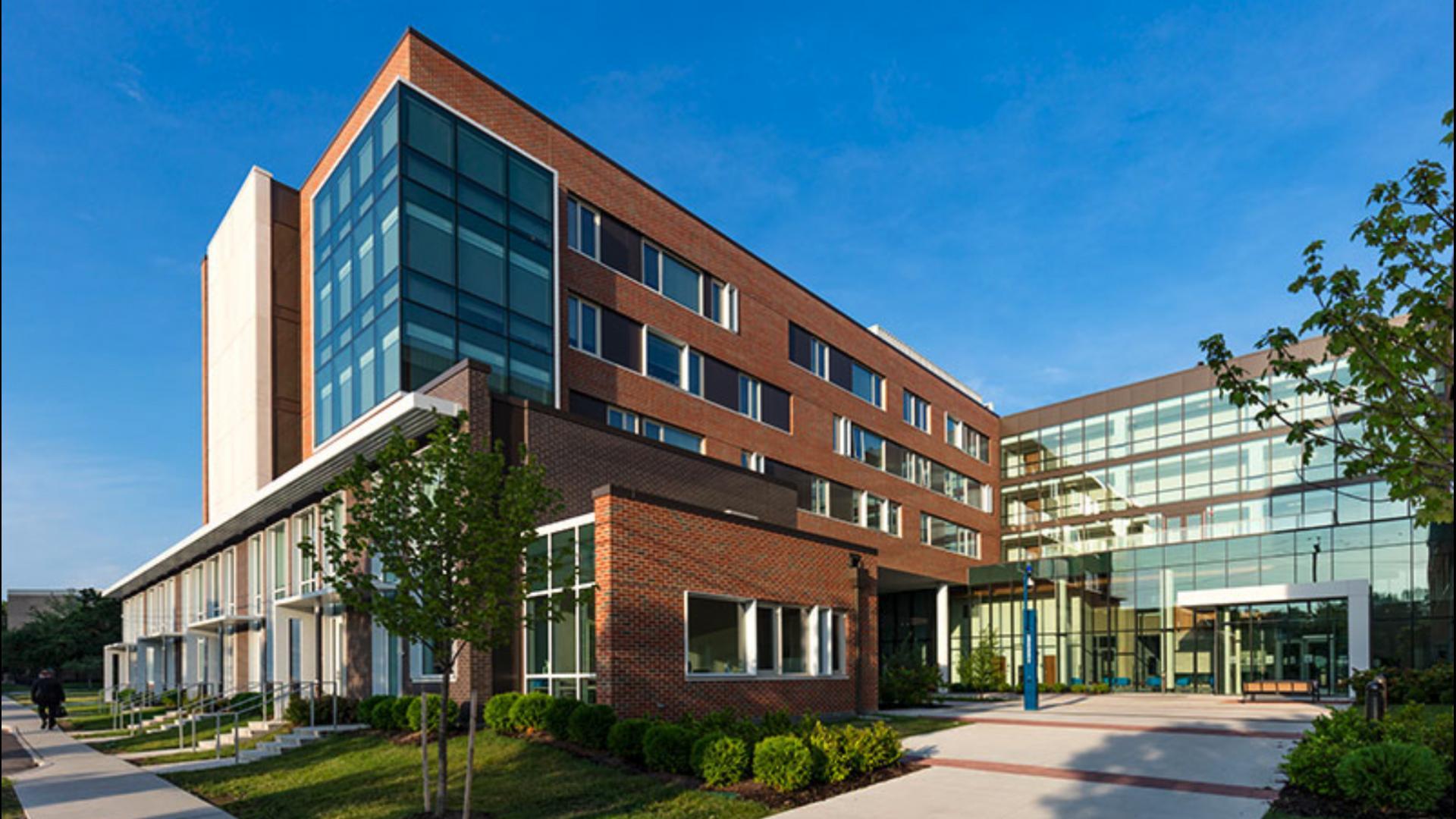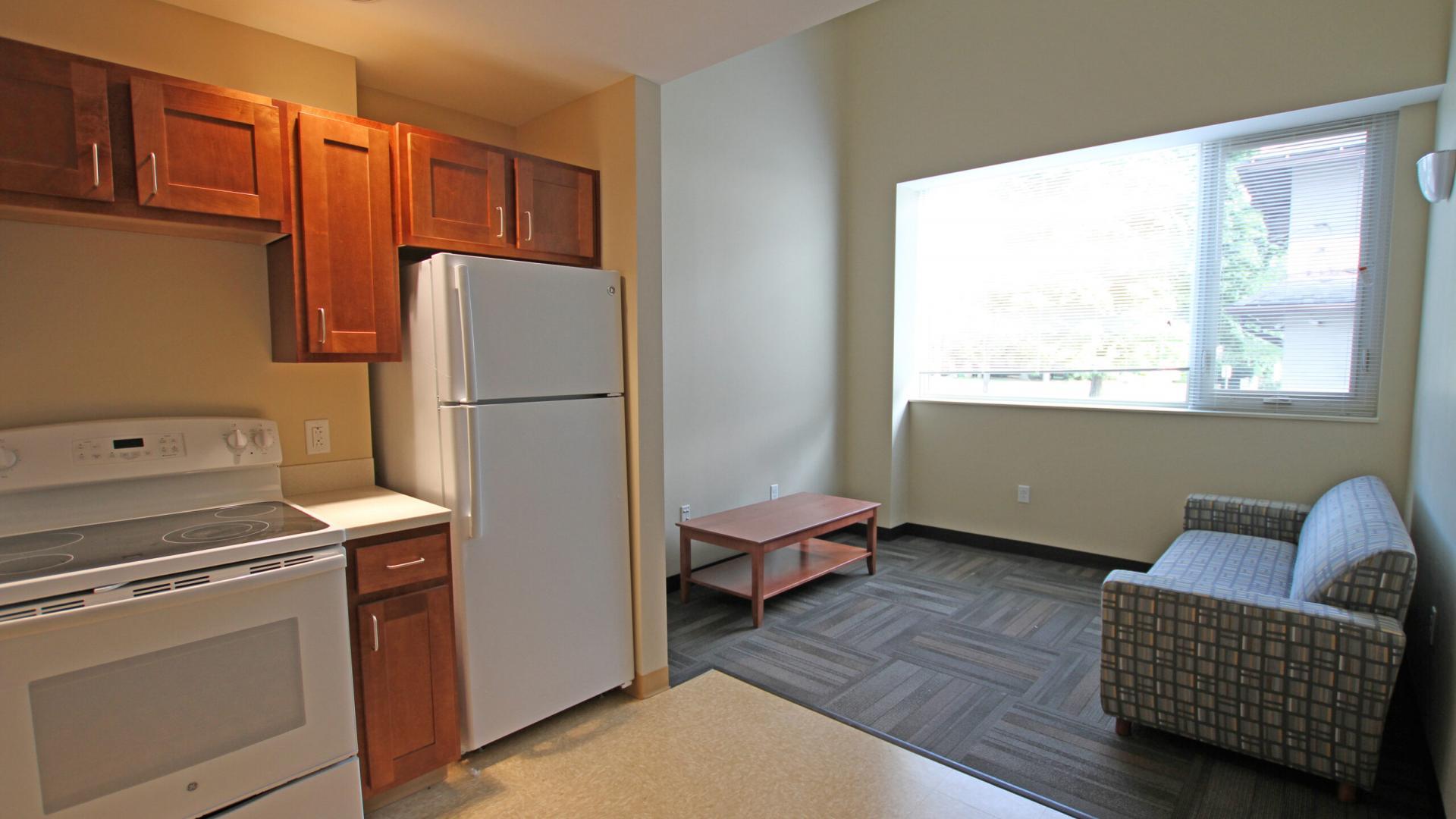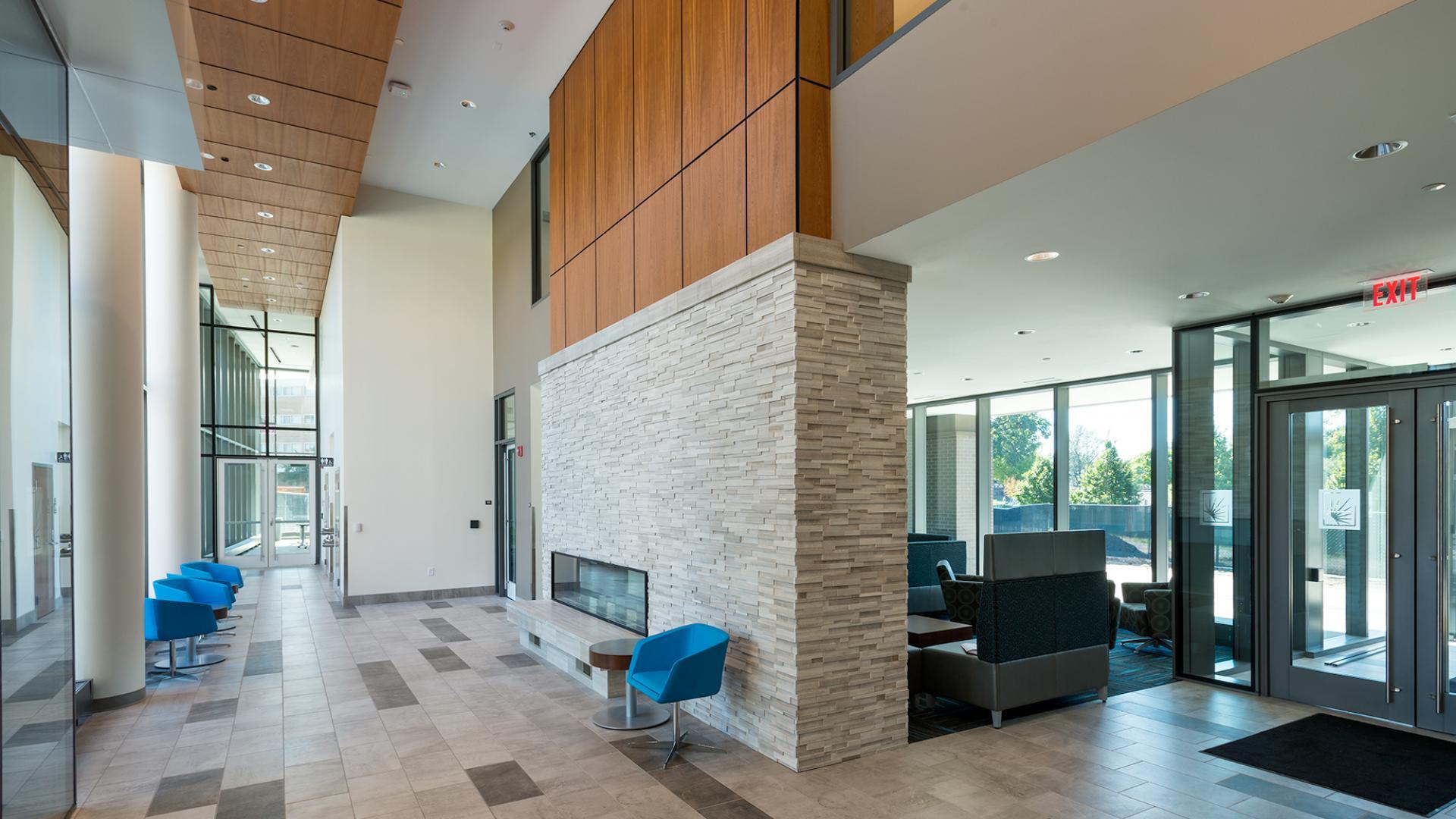Stephanie Tubbs Jones Residence Hall at CWRU
As a leading institution in science and technology, Case Western Reserve University sought to explore and define the next generation of student housing solutions with a new, on-campus, residence hall and learning center for upper-level students.
-
Client
Case Western Reserve University -
Location
Cleveland, OH -
Architect
SCB Architects & VAA Architects -
Service Performed
Design-Build Sitework Contractor Carpentry & Interior Finishes Contractor -
Year Completed
2015




The project focused around three basic elements: community, sustainability, and learning environments and was to be constructed on the site of an existing athletic field abutting the surrounding residential neighborhood just south of Wade Park. Realized via the Design-Build project delivery method, Marous Brothers Construction teamed with Solomon Cordwell Buenz (SCB) Architects & VAA Architects in an extensive preconstruction phase to ensure optimal building systems were incorporated into the project knowing that the project sought LEED Gold Certification upon completion from the USGBC. As a paradigm for the next generation of housing, this student residence achieves 30% above ASHRAE energy performance through its innovative and sustainable design. The design creates an environment conducive for personal growth through the reinforcement of social structures of a community: home, block, neighborhood, and village. Providing a scalable living environment allows for opportunities for students to engage locally, and for better collegiate social dynamics in what is a very driven and talented academic population. The five-story, 124,000 square foot structure has an exterior envelope of brick masonry veneer, precast concrete, and composite metal panels with large window openings and operable casements. Dedicated as the Stephanie Tubbs Jones Residence Hall, the facility houses 290 CWRU students within 106 apartments. The first floor and portions of the second provide common spaces, laundry, bike storage, mechanical space, and seminar area. Each of the upper floors provide common lounges and study spaces organized by residential “houses” including a total of 14 single-occupancy apartments, 36 double occupancy apartments including townhome style units and 51 quad occupancy apartments. Extensive amenities within the hall such as dedicated study nodes and a state-of-the-art learning center further support the collegiate environment.



